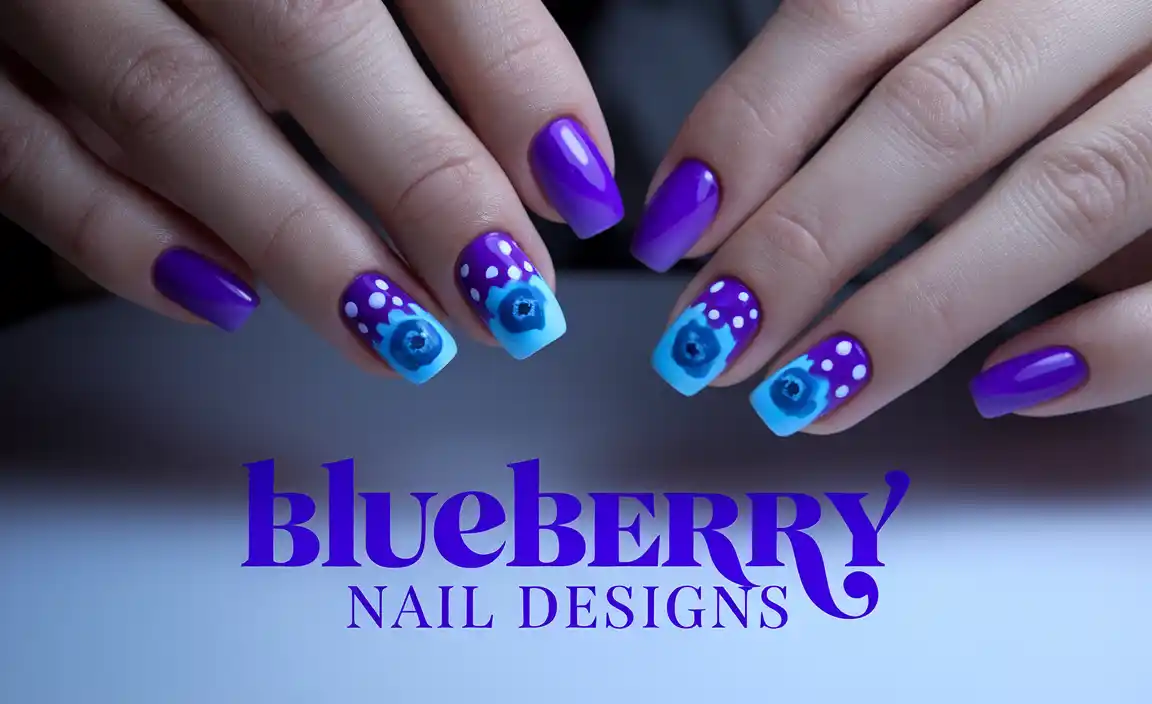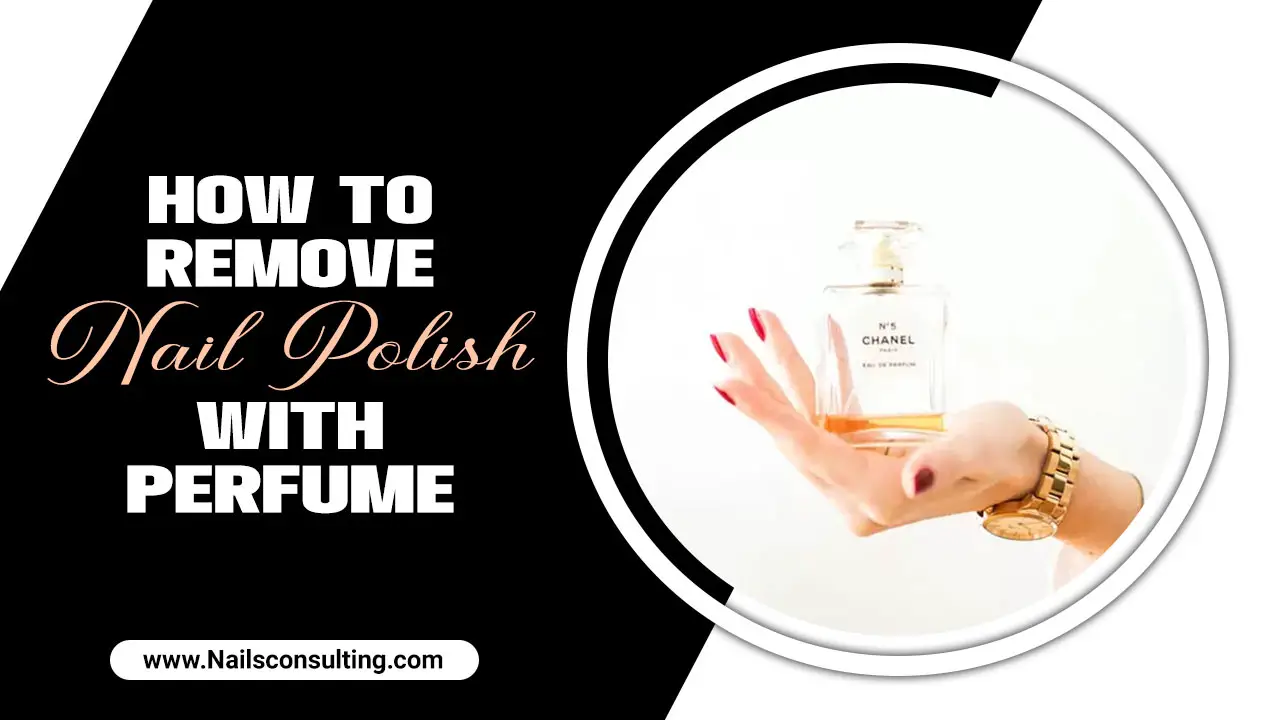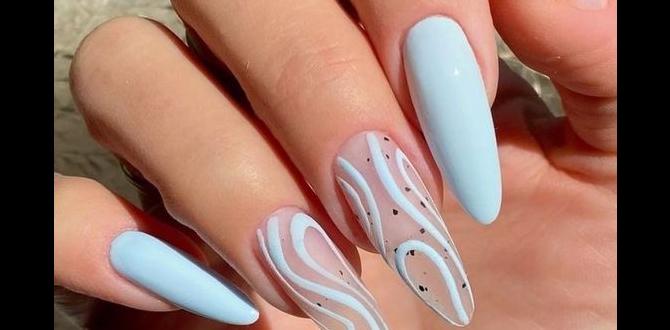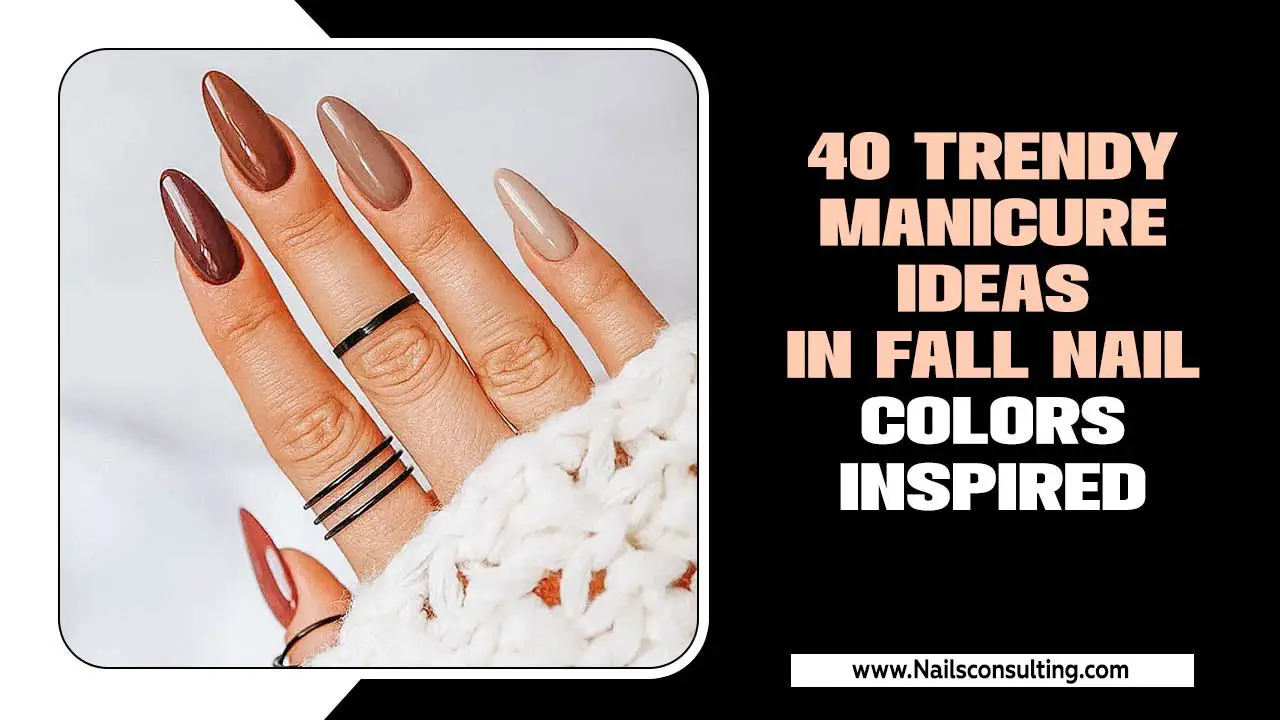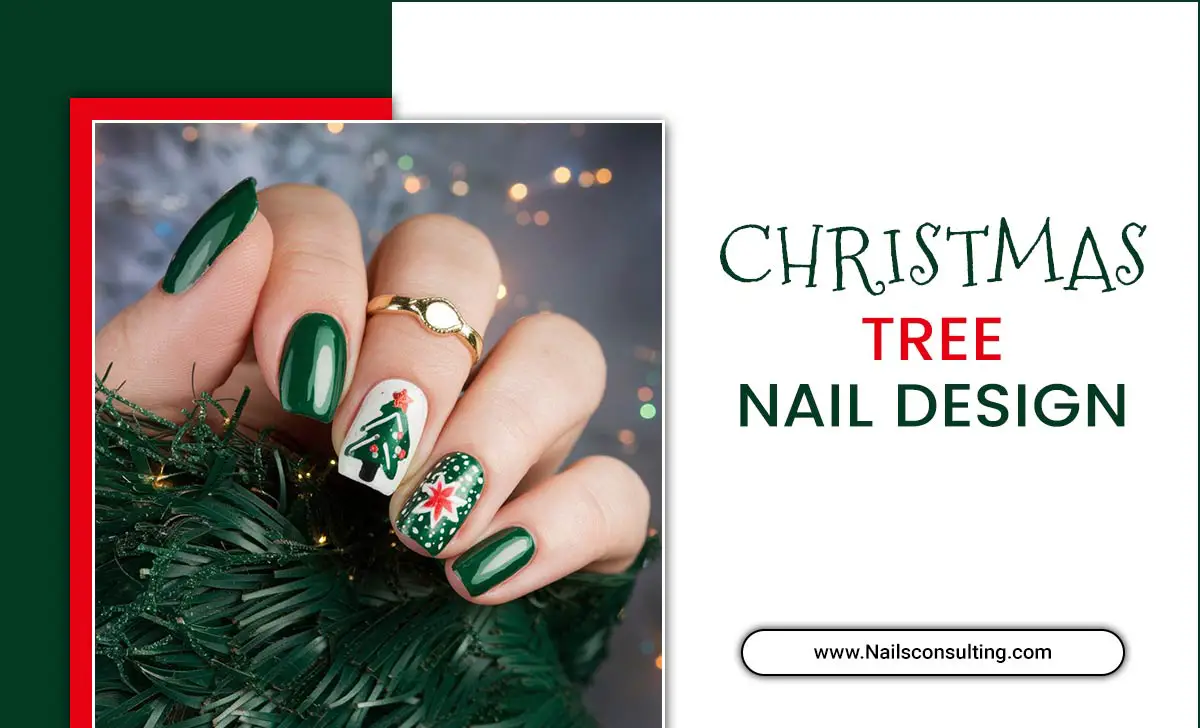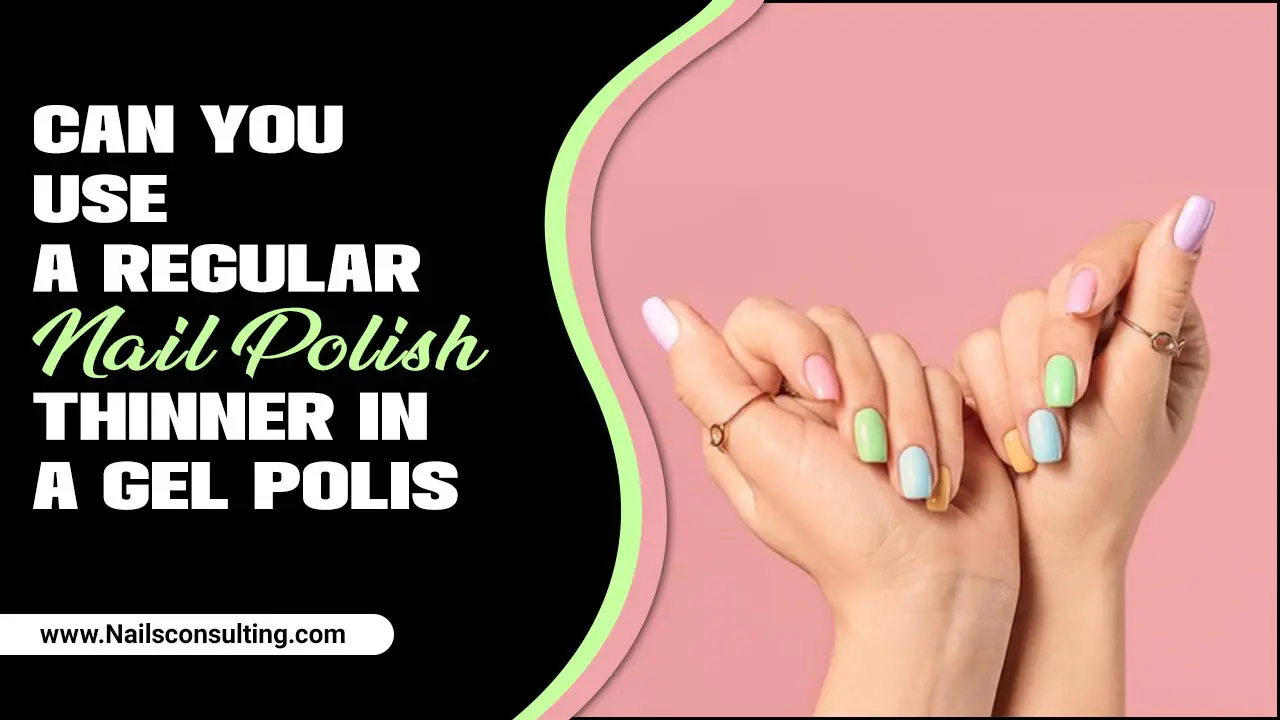Tartan nail designs are the perfect way to bring cozy, classic style to your fingertips this fall. Whether you love bold checks or subtle plaids, these patterns offer endless creative possibilities. Learn simple techniques and discover essential fall color palettes to rock this iconic look effortlessly.
Fall is here, and with it comes a craving for cozy sweaters, warm drinks, and that unmistakable autumnal charm. If you’re looking to add a touch of that seasonal spirit to your look, your nails are a fantastic place to start! Among the most beloved fall nail trends, tartan designs stand out. They evoke a sense of tradition, warmth, and sophisticated style that just screams autumn. Don’t worry if you’re new to nail art; we’re going to break down how to achieve these beautiful patterns with ease. Get ready to fall in love with your nails all over again!
What Exactly Are Tartan Nail Designs?
Tartan nail designs are manicures inspired by the iconic crisscrossing geometric patterns found in traditional Scottish tartans or plaids. Think of the checks you see on a cozy blanket, a classic kilt, or a stylish scarf – that’s the essence we’re capturing on your nails!
These designs typically involve intersecting lines of different colors and thicknesses, creating a woven or plaid effect. They’re incredibly versatile, ranging from bold and graphic to subtle and chic. For fall, we often see these designs in rich, warm color palettes that complement the season’s fashion and foliage.
Why Tartan is a Fall Fashion Essential
Fall is the season of comfort, texture, and rich colors. Tartan patterns perfectly capture this mood. The intersecting lines and layered colors offer a sense of depth and warmth that feels incredibly fitting as the weather cools.
Here’s why tartan is a go-to for autumn enthusiasts:
- Cozy Vibes: Tartan instantly evokes feelings of warmth, libraries, and crackling fireplaces. It’s the visual equivalent of a hot cup of cocoa.
- Timeless Style: Unlike fleeting trends, tartan is a classic pattern that never truly goes out of style. It adds a sophisticated touch to any outfit.
- Autumnal Color Palettes: Fall is rich in color – think deep reds, forest greens, warm browns, mustard yellows, and creamy neutrals. Tartan designs naturally incorporate these hues, making them a perfect seasonal match.
- Versatility: Whether your personal style is modern and minimalist or bold and eclectic, there’s a tartan design that can fit.
- Texture Play: Tartan can be interpreted in many ways on nails – from smooth polish to textured finishes, adding another layer of interest.
Essential Tools for Your Tartan Manicure
You don’t need to be a pro to create stunning tartan nails! With a few key tools and some patience, you can achieve fantastic results right at home. Here’s what you’ll want to have on hand:
Nail Prep Essentials:
- Nail File and Buffer: To shape your nails and create a smooth surface.
- Cuticle Pusher/Orange Stick: To gently push back cuticles for a cleaner canvas.
- Nail Polish Remover: To start with clean, oil-free nails.
- Base Coat: Crucial for protecting your natural nails and helping polish adhere better.
Tartan Design Tools:
- Fine-Tipped Nail Art Brushes: These are your best friends for drawing clean, crisp lines. A set with various thin tips is ideal.
- Dotting Tools: While not strictly for lines, they can be used to create small dots or accents within your tartan design.
- Thin Striping Tape: This self-adhesive tape is amazing for creating super-straight lines and sharp edges. It’s a beginner’s secret weapon!
- Stencils (Optional): Some people find pre-made plaid stencils helpful, though freehanding is often more satisfying.
Polishes:
- Base Color: This will be the primary background color of your tartan design.
- Accent Colors: 2-3 complementary or contrasting polish colors for your lines and checks.
- Top Coat: To seal your design, add shine, and prevent chipping.
Our Top Tool Pick: Nail Art Brushes
For nailing crisp lines, a good set of fine-tipped nail art brushes is invaluable. Look for brushes with synthetic bristles that hold their shape well. Brands like this variety pack on Amazon offer a range of sizes perfect for different line thicknesses and details. Remember to clean your brushes thoroughly after each use to keep them in top condition!
Considering Gel vs. Regular Polish
You can achieve tartan nails with both regular nail polish and gel polish. Gel polish offers incredible durability and a super-glossy finish, but it requires a UV/LED lamp to cure. Regular polish is readily available and easy to use, though it generally chips faster. For beginners, regular polish is often more forgiving as you can correct mistakes before it dries.
Fall Color Palettes for Tartan Nails
The beauty of tartan lies in its adaptability to color. For fall, we want to embrace those rich, earthy, and warm tones that define the season. Here are some of our favorite fall color combinations for tartan nail designs:
Classic Plaid Palette:
This combination is timeless and embodies the traditional tartan look.
- Base: Deep Forest Green or Navy Blue
- Lines: Burgundy Red, Black, and Cream or White
Cozy Maple Leaf Palette:
Inspired by the changing leaves, this palette is warm and inviting.
- Base: Muted Mustard Yellow or Warm Beige
- Lines: Burnt Orange, Deep Brown, and a touch of Gold or Cream
Rustic Charm Palette:
Earthy and grounded, this palette feels sophisticated and natural.
- Base: Warm Taupe or Charcoal Grey
- Lines: Olive Green, Terracotta Red, and a thin line of Black or White
Winter Berry Palette:
As fall transitions into winter, this palette offers a hint of festive cheer.
- Base: Deep Plum or Rich Berry
- Lines: Emerald Green, a pop of Cranberry Red, and a touch of Silver or White
Neutral Elegance Palette:
For a more subtle and chic take on tartan.
- Base: Creamy Off-White or Light Grey
- Lines: Black, a soft Camel Brown, and a super-fine line of Gold
When choosing your colors, think about what you’ll be wearing. Do you have a favorite fall sweater? Try to match or complement its colors! You can also mix and match within these palettes to create unique combinations that speak to your personal style. Remember, consistency in line thickness and color placement is key to achieving that authentic tartan look.
How to Create Tartan Nail Designs: Step-by-Step
Ready to get crafting? Here are two beginner-friendly methods for creating fantastic tartan nail designs. Choose the one that best suits your comfort level and available tools!
Method 1: Using Nail Art Brushes (Freehand & Semi-Freehand)
This method gives you the most control and allows for intricate designs once you get the hang of it. Don’t worry about perfection on your first try – practice makes progress!
- Prep Your Nails: Start with clean, dry nails. Apply your base coat and let it dry completely. Then, apply your chosen base color. You’ll likely need two coats for opaque coverage. Let the second coat dry until it’s no longer tacky to the touch but still has a little grip for the polish to adhere to – this is crucial!
- Paint the First Set of Parallel Lines: Using one of your chosen accent colors and a fine-tipped nail art brush, carefully paint a series of parallel lines horizontally across your nail. Keep the lines as straight and evenly spaced as you can. Let these lines dry for a minute or two until they are no longer wet.
- Add the Perpendicular Lines: Now, using a different accent color, paint another set of parallel lines vertically across your nail, intersecting the first set of lines. Imagine drawing a grid. Again, try to keep these lines straight and evenly spaced. You should start seeing a plaid pattern emerge! Let these dry for a minute or two.
- Add Detail Lines (Optional but Recommended): To make it look more like a traditional tartan, add thinner lines using a third color or a darker/lighter shade of one of your existing line colors. These can be placed alongside some of the thicker lines or in between them. You can also add small black or white crosses where lines intersect for a more detailed look.
- Refine and Correct: Use a small brush dipped in nail polish remover to carefully clean up any stray marks or uneven lines. It’s easier to do this while the polish is still slightly pliable.
- Let it Dry and Seal: Allow your design to dry completely. This is the most important part! Rushing this step can smudge your beautiful work. Once thoroughly dry, apply a generous layer of your top coat to seal the design, add shine, and protect it from chipping.
Method 2: Using Striping Tape (For Super-Sharp Lines)
Striping tape is a fantastic tool for beginners because it creates perfectly straight lines with minimal effort.
- Prep and Base Coat: Just like with Method 1, start with clean, dry nails, a base coat, and your main base color. Apply two coats of your base color and let them dry COMPLETELY. This is critical for the tape to adhere properly and peel off cleanly without lifting the polish underneath. Use a quick-dry topcoat and let it dry thoroughly if you’re worried about smudging.
- Apply the First Tape Lines: Cut small pieces of striping tape and carefully apply them horizontally across your nail. Press them down firmly, especially along the edges, to ensure good adhesion.
- Paint Your First Color: Using your first accent polish color, paint over the taped-off sections. You can paint over the entire nail or just the sections between the tape. Ensure even coverage.
- Remove the Tape (While Wet!): This is the secret to crisp lines! While the polish you just applied is still wet, carefully use tweezers or the end of your orange stick to peel off the striping tape. Peel slowly and at an angle away from the wet polish.
- Let it Dry and Repeat for Perpendicular Lines: Let the freshly painted lines dry completely. You might want to apply a quick-dry topcoat and let that dry too. Once fully dry, apply your striping tape again, this time either vertically or at an angle, to create your second set of lines.
- Paint and Peel Again: Apply your second accent color over the taped sections and remove the tape while the polish is still wet.
- Add Detail and Seal: Once all your painted lines are completely dry, you can use a fine-tipped brush with a dark color (like black or navy) to draw thin intersecting lines or small crosses where the lines meet, adding more depth. Finish with a generous layer of top coat to seal and protect your design.
Pro Tip for Smoother Lines
When using a nail art brush, dip the tip of your brush into the polish, don’t overload it. A little product goes a long way for fine lines. For striping tape, ensure the base color is totally dry and use a thin, even coat of your accent color. A slightly thicker top coat can help blend any slight imperfections from the line edges.
Popular Tartan Nail Styles for Fall
Beyond the basic plaid, there are many ways to interpret tartan for a chic fall manicure. Here are some popular styles to inspire you:
The Classic Check
This is the most traditional style, featuring intersecting horizontal and vertical lines of varying thickness and color. It’s perfect for anyone who loves a timeless, sophisticated look.
The Windowpane Plaid
Essentially a simpler version of the classic check, this style uses fewer lines and wider open spaces, resembling a windowpane. It’s a more minimalist and modern take on tartan.
The Tartan Accent Nail
Can’t commit to a full tartan manicure? No problem! Opt for a tartan design on just one or two accent nails (like your ring fingers) while keeping the rest of your nails a solid complementary color. This is super chic and beginner-friendly.
Tartan French Tips
A fun twist on the classic French manicure. Instead of a solid color tip, create a thin tartan pattern along the edge of your nail. This adds a subtle yet stylish nod to the trend.
Tartan with Glitter or Metallics
Elevate your tartan design by adding a touch of sparkle! You can incorporate glitter polish into one of your lines, use a metallic foil as an accent, or even add a glitter topcoat over your finished tartan pattern for extra glam.
Tartan Color Blocking
Instead of intricate lines, use thicker blocks of tartan colors. This is less about precise lines and more about the color play within a plaid-inspired layout. This is often easier for beginners and looks very graphic.
Tartan Gradient
Combine the soft blend of a gradient manicure with the structure of tartan. You could have a gradient background color with tartan lines overlaid, or even a subtle gradient within the tartan lines themselves.
Consider the scale: For shorter nails, opt for thinner lines and simpler patterns to avoid overwhelming the nail. Longer nails can handle more complex and detailed tartan designs.
Table of Tartan Nail Design Ideas and Difficulty
To help you choose your next tartan adventure, here’s a quick guide to common styles and their general difficulty levels for beginners:
| Tartan Style | Description | Beginner Difficulty | Key Techniques | Suggested Colors |
|---|---|---|---|---|
| Classic Check | Interlocking thick and thin lines, often with multiple colors. | Medium | Freehand brushes, steady hand, color selection. | Deep reds, greens, blues, blacks, creams. |
| Windowpane Plaid | Simple grid with wide-open spaces. | Easy | Striping tape, or broad brush strokes with freehand. | Navy, grey, white, tan, olive green. |
| Accent Nail | Tartan pattern on one or two nails only. | Easy | Any technique applied to a single nail. | Varies based on accent nail color. |
| Tartan French Tips | Plaid pattern applied along the nail tip. | Medium | Fine brushes, steady hand for curved lines. | Contrasting colors like black & white, red & navy. |
| Glitter Accents | Adding glitter to lines or as a topcoat. | Easy | Applying glitter polish strategically. | Any base with corresponding glitter. |
| Color Blocking | Bold blocks of plaid-inspired colors. | Easy | Wider brushes or tape to create blocks. | Warm neutrals, jewel tones, or autumnal shades. |
Caring for Your Tartan Manicure
Once you’ve achieved your perfect tartan nails, you’ll want them to last! Here are a few tips to keep them looking fabulous:
- Be Gentle: Avoid using your nails as tools. Try not to pick at things, open cans, or scrape surfaces with them.
- Moisturize: Keep your hands and cuticles hydrated with a good cuticle oil and hand cream. Healthy cuticles mean healthier-looking nails.
- Wear Gloves: When doing household chores, especially washing dishes

